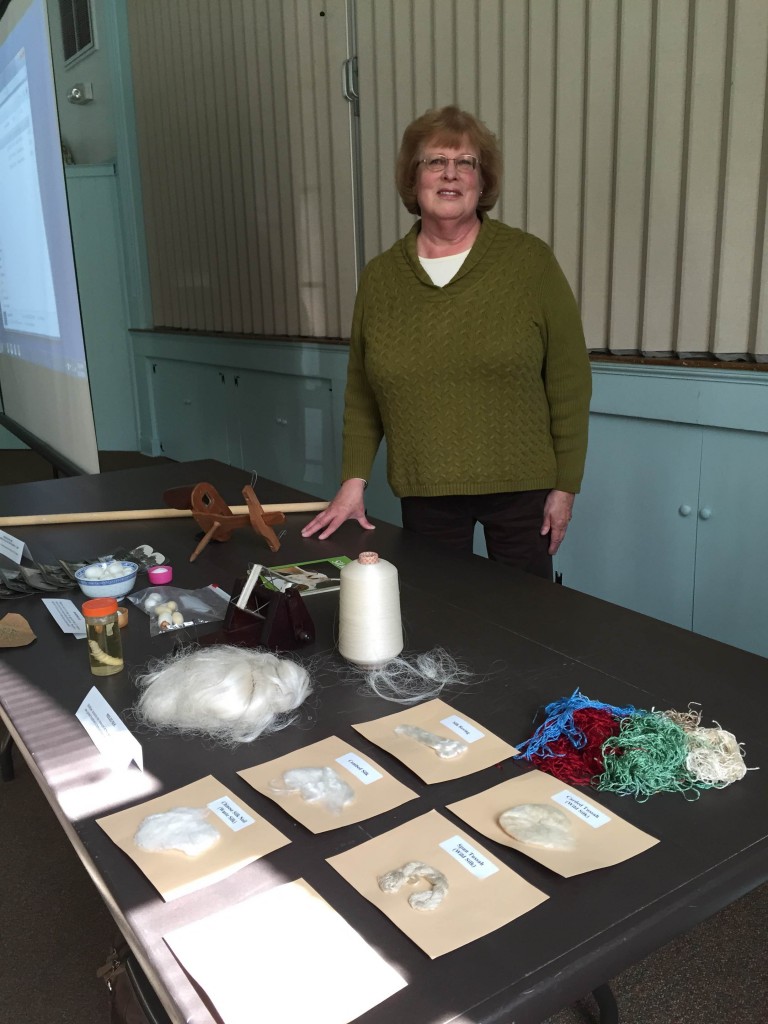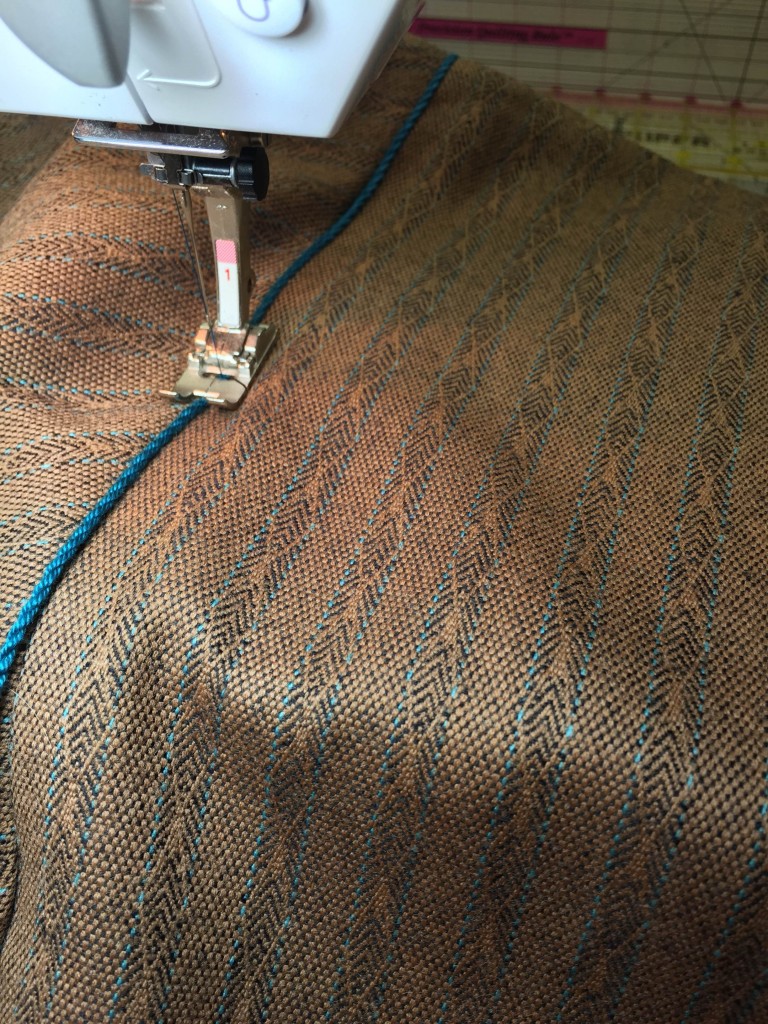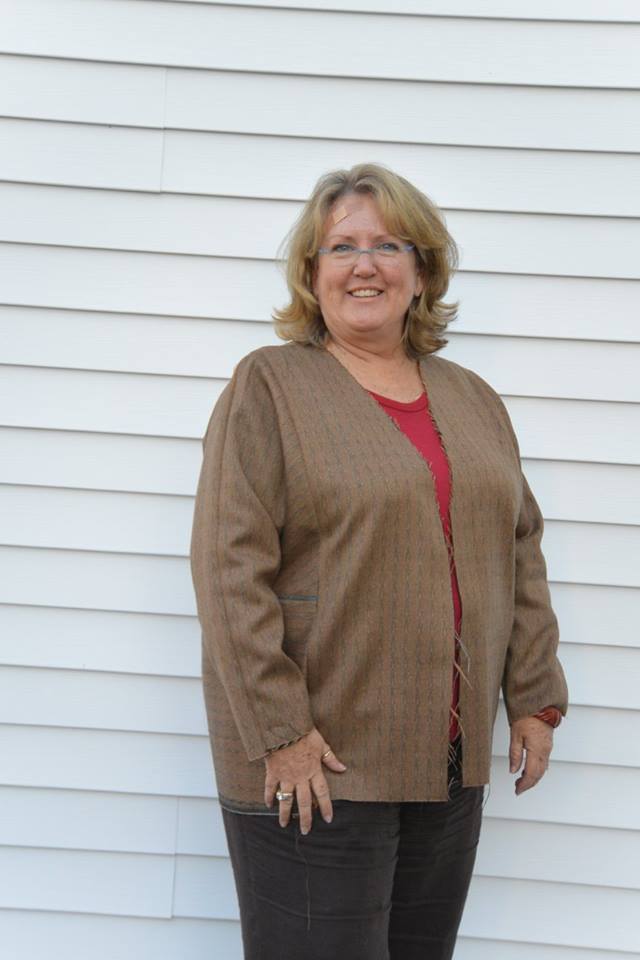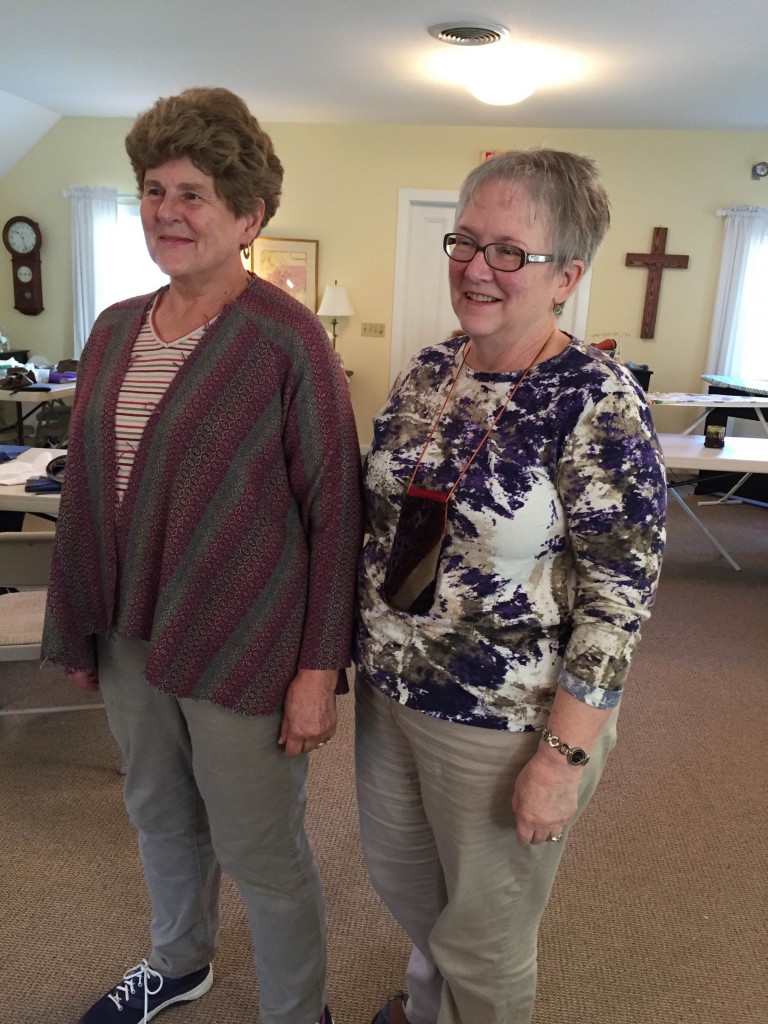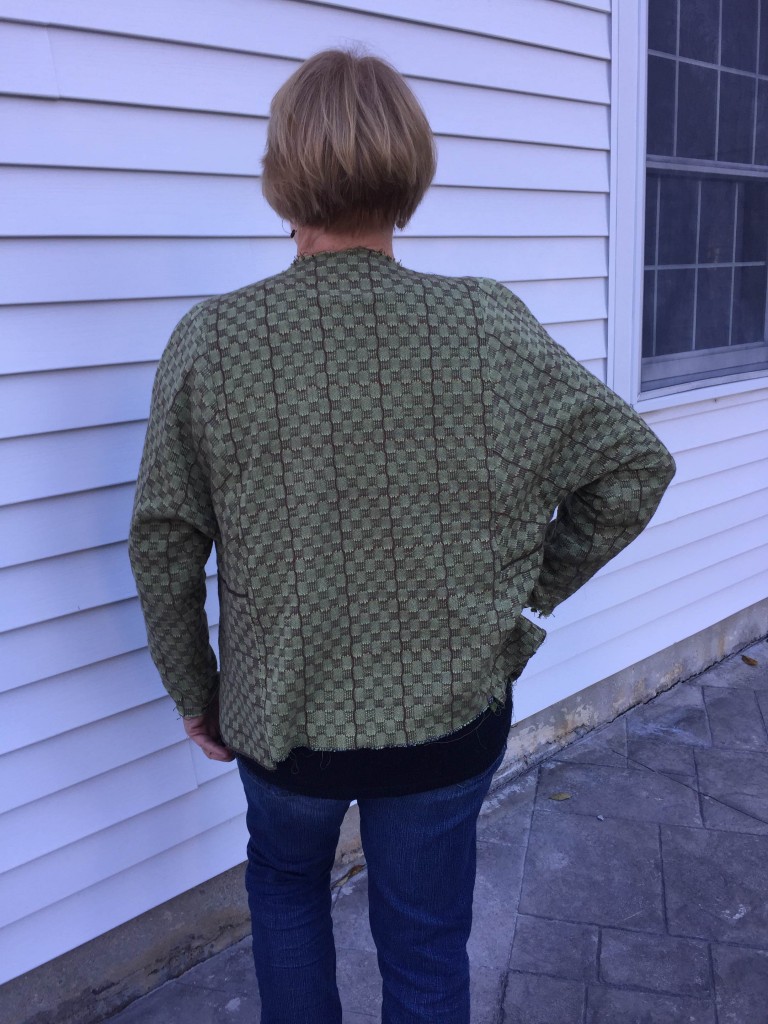That title is a mouthful. Initially, I just liked the sound of “Sericulture in Connecticut,” but I could not write about that when I’d also just spent a fabulous three days sewing with Sarah Fortin! Some week! I guess if all weeks were as educational and productive I’d be wiped out all the time. Who knew there was a silk industry in Connecticut? I did not. I certainly knew that China and other Asian countries have had silk production since the dawn of time. And I knew that by the Renaissance, European countries wanted to grow their own silk worms so they could stop buying costly silk from China that involved the long and treacherous journey on the silk roads. Well, it turns out that the English wanted to see if silk could be successfully cultivated in the American colonies. The experiment started in the area from Virginia to Georgia, around 1650. This is the same period in which the English experimented growing indigo in the southern colonies as well. A century later the southern colonies were focused on cotton and tobacco, and an experimental silk culture had started in Mansfield, an area east of Hartford. This was a cottage industry in which farmers were encouraged to plant black mulberry trees in their orchards, and their wives raised the silkworms and learned to reel the silk. The program was presented by Ann Galonska from the Mansfield Historical Society. She has been researching the silk industry in this part of Connecticut for a number of years and she also decided to try her own hand at raising silk worms. She was able to feed the caterpillars on the leaves from the few remaining black mulberry trees in the area.
Interestingly, Ann told us that silk worms put on 80% of weight during the last week of their caterpillar cycle. They go through so many mulberry leaves that she has to replenish the leaves multiple times a day.
Ann brought silk cocoons, silk worm eggs, a silk worm preserved in a jar (formaldehyde?), and various samples of different silk preparations. She showed slides of the various silk mills that cropped up in the area. Hanks Silk Mill ws the first mill in the US, established in 1810. As time went by more mills were established: Chaffee Silk Mill and Mansfield Silk Company, until by 1869, there were eight mills in the area. She showed bills where farmer were paid for the silk they delivered, as well as ledgers of bartering with silk as payment for household goods.
She showed an adverstisement from 1834, urging farmers to buy mulberry trees to add to their orchards: 100 black mulberry trees for $3 – 5. Hard to imagine, even given the cost of things back then. By the end of that decade the same 100 trees cost $500. And that is even harder to imagine! Silk was a profitable industry in this area for a couple of decades, but the decline began when people started buying saplings of the white mulberry tree, which was known to be preferable to black mulberry. Ann said these trees survived the first couple of winters in Connecticut which happened to be mild, but when a more typical New Engalnd winter ensued the white mulberries were not hardy enough to survive. And most of the farmers had cut down their black mulberry trees in order to plant the white version. While raising silk worms swiftly declined at this point, the mills hung on well into the 20th century using imported silk. You can find more information, along with early 20th c. photos of some of the mills at the historical society’s website. And there are tours of the mills at certain times of the year. Now that would be a treat!
Much of last week I spent at a workshop with Sarah Fortin, learning to sew a garment from handwoven fabric. This is far from my forte (ha ha!)–so far that I would say I am completely inept at making a flattering garment. So to cut into precious handwoven fabric for a likely-to-fail attempt at making a jacket made me pretty uncertain about taking this workshop. I brought a nice selection of commercial fabrcis to choose from: a length of Harris Tweed, two lengths of wool melton, and a selection of other wool crepes and one chenille that I thought might work up as something interesting. Somehow, in the tote bag of fabrics I also included a very precious length of wool fabric that Rabbit Goody wove, and that I bought from her as a remnant, about 20 years ago. This piece of yardage was far more precious to me than any of my own handwoven fabric, and I cannot explain why I took it with me to the workshop!
Naturally, when I showed Sarah my fabric choices, I began listing all the reasons why I would not consider cutting into the Rabbit Goody fabric. And naturally, Sarah listed all the reasons why I should. In the long run, Sarah (with enthusiastic support from the rest of the workshoppers) won this debate.
I have to say it was not easy to cut into that beautiful fabric. The sewing was enjoyable and ate up most of the workshop time. When I reached the last seam in assembling the jacekt I suddenly got very anxious. I knew it would be time to try it on. It still had a lot work to do–all the embellisments I’d planned as well as all the finishing for the sleeves and the hem and attaching a front band. But it was at this point, when all the pattern pieces were together, that I could try on the jacket, and I did not want to do it! Sarah came with me to a more private area where the others could not watch, and I put it on. I was very shocked to find that I loved it! ….and that it fit so well. Whew! All credit for this goes to Sarah, of course, for helping me size the pattern before cutting it out. And of course she was right– better to enjoy this fabric as a garment– the very reason I bought it in the first place, rather than hiding it away in my stash.
Everyone made a successful jacket during our workshop. Marjie, who is likely our most accomplished seamstress, finished her jacket first. The pattern she used is called the ‘swing’ jacket. Look how pleased both Marjie and Sarah are with the outcome! The rest of us are are sighing over this and hoping ours will turn out as well!
Last day of class, more people are approaching the finishing! This is Jody’s jacket, a wonderful fabric woven on a warp at Vavstuga. The coloris quite off–it’s actually a great mixture of two greens and brown. Jody made the same pattern I did, called the “bias sleeve” jacket. I think Jody’s jacket is the most successful combination of weave structure and garment design. It’s a beauty and it looks fabulous on her!
One more finished swing jacket with terrific color placement!
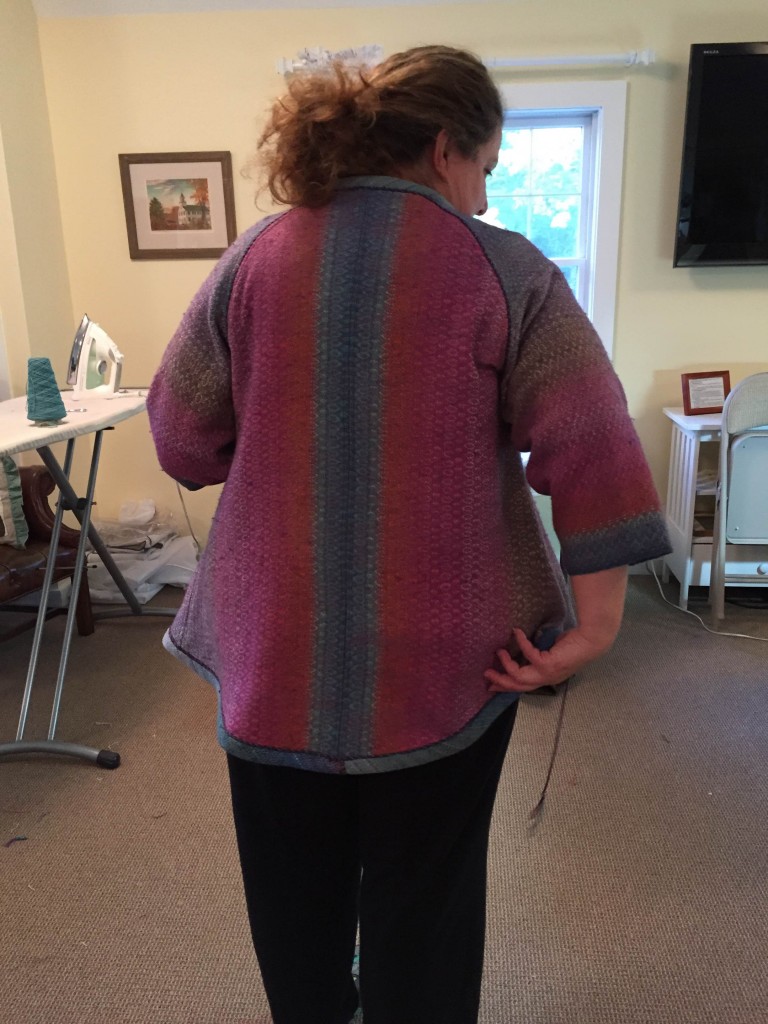 Some of us will be getting together again this week to continue to work on our finishing. I’m now a bit confused about my sleeve finish and how to put on the front band. I’m hoping some of the more experienced sewers (that would ALL of them!) can give me some pointers. Also, Sarah has offered to answer any questions so I think I will email her. I’d better get to it!
Some of us will be getting together again this week to continue to work on our finishing. I’m now a bit confused about my sleeve finish and how to put on the front band. I’m hoping some of the more experienced sewers (that would ALL of them!) can give me some pointers. Also, Sarah has offered to answer any questions so I think I will email her. I’d better get to it!

